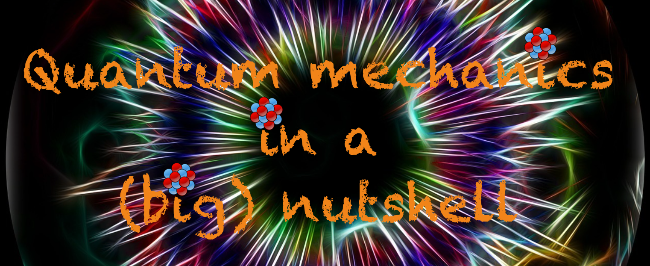
This post is the first of a series of posts aiming to share quantum mechanics lecture notes on Steemit.
I am actually exporting onto the Steemit platform a quantum mechanics course that I have designed a couple of years ago for bachelor students. All these quantum mechanics posts will actually be based on a larger version of my lecture notes (with much more equations, exercises, etc.) that will be published as a book, dedicated to French university students, very soon.
This initiative follows the idea of @justtryme90 to use the blockchain to share educational material and make it easily accessible for reading and sharing. Please visit his blog in the case you are interested by chemistry.
INTRODUCTION
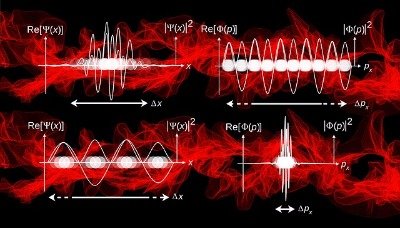 [image credits: pixabay]
[image credits: pixabay]
The idea behind this post and the following ones is to present quantum mechanics under its simplest form, in a way solely based on the properties of the waves. Although the formalism developed by Paul Dirac is very elegant, the corresponding necessary mathematical skills are far from being obvious and this difficulty sometimes hides the underlying physics for those entering the field of quantum mechanics for this first time.
I assume that the public on Steemit is interested by the physics behind quantum mechanics rather than by the associated mathematical formalism, so that these lessons will only assume that the reader knows what vector and a vector space are, and can derive and integrate basic functions.
In the way I have designed these lessons, the mathematical formalism is barely mentioned, and the physics results behind the equations are instead underlined. The goal is to emphasize, promote and expose the beauty of quantum mechanics.
Those quantum mechanics lessons can be followed under the dedicated qm-lessons tag, and I will try to release one lesson every 7-10 days (so that this will leave the time to any potential follower to digest the material). Do not hesitate to leave a comment or ask questions, possibly in passing by the #steemSTEM channel on the Steemit chat.
WHAT IS A THEORY
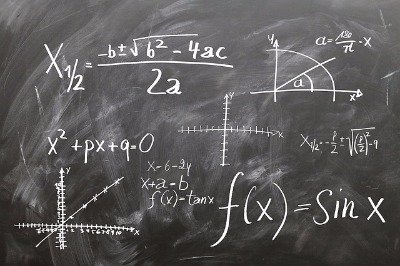 [image credits: pixabay]
[image credits: pixabay]
Quantum mechanics is the most fundamental theory in physics. It has appeared at the beginning of the last century as a reaction to the flaws of classical mechanics, and is today an extremely successful for explaining all phenomena at the microscopic level including in particular the properties of the molecules, the atoms and the atomic nuclei.
Denoting quantum mechanics as a theory, it is useful to start with a definition of this word. I already told several times that in science, this word has a very well-defined meaning different from its meaning in the everyday language. In the latter case, it consists of a tentative explanation for observed events. It can hence be speculative.
On scientific grounds, a theory is a mathematical structure precisely explaining the ensemble of all experimental facts of a given domain. It can be used to make predictions and is thus testable. Let us discuss two examples.
Classical mechanics is a theory aiming to explain the properties of the macroscopic world and is thus not suitable for the microscopic level.
The old quantum theory developed by Bohr was correctly describing the properties of the hydrogen atom, but failed at describing more complicated systems like helium atoms. As a result, it has lost its status of ‘theory’ when it appeared that it was only applicable to a small fraction of all observed microscopic world phenomena.
In the future, a new theory could emerge from data. It is very likely that quantum mechanics will be a limit of this theory in some specific regime (otherwise there is no way it could be so successful today).
POSTULATES
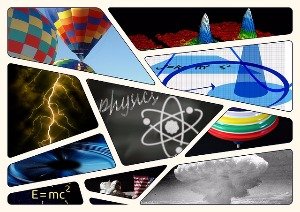 [image credits: pixabay]
[image credits: pixabay]
Founding principles of physics relies on a small number of hypotheses called postulates. These allow us to establish a mathematical description of all observable phenomena and cannot be demonstrated (by definition).
In order for postulates to be accepted by the physics community, they must allow for all experimental facts to be explained by logical deduction starting at the level of the postulates. There is thus no absolute explanation of an observed fact, but only a relative explanation with respect to the postulates.
New postulates are searched for by induction, trying to intuitively generalize existing notions or unify partial descriptions of phenomena that sound incompatible.
For instance the postulates of classical mechanics can be summarized into three items.
A system is characterized by its position and velocity.
The measurements of the system position and velocity are as precise as the experimental apparatus allows for it.
The evolution of the system is characterized by the equation of Newton.
Quantum mechanics has risen after physicists from the beginning of the 20th century found that some phenomena could not be explained starting from the three above postulates.
FOUNDING PRINCIPLES OF MICROSCOPIC PHYSICS
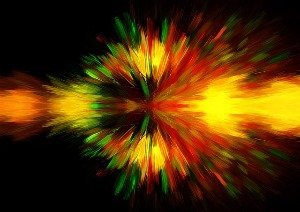 [image credits: pixabay]
[image credits: pixabay]
The goal of physics is to provide a description of all observable phenomena starting from a reduced set of fundamental principles. Physics laws are hence supposed to apply to all observable phenomena, ranging from lab experiments to those governing the evolution of the structure of the universe. Yes, it is ambitious…
Quantum physics covers the laws and the properties of the microscopic world, which ranges from the elementary constituants of matter to composite objects like nucleons (also known as protons and neutrons), atomic nuclei, atoms and molecules.
The calculations nevertheless become not manageable when the number of particles rise, and we quickly enter the domain of statistical physics where macroscopic effects are deduced from microscopic notions.
In contrast, classical physics describes physics at the macroscopic scale. It includes newtonian mechanics and electromagnetism, and is successful in describing a wealth of phenomena in a much simpler way than if we wanted to treat them under the framework of quantum physics or statistical physics.
All the founding principles of physics at the microscopic level can be summarized as follows.
Our universe and all objects inside it are constituted of elementary building blocks called particles. There is a small number of different particle species, each particle of a given species having very well defined properties.
All observed phenomena are the results of interactions among particles. There is a small number of different interactions, each interaction having very-well defined properties.
During an interaction, several quantities that can be measured are conserved. In other words, their measured values does not vary. Those quantities are actually connected to conservation laws originating from symmetry principles.
SUMMARY
In this first lesson of quantum mechanics, we have defined what a physics theory is, how predictions are made relatively to some postulates and have introduced the founding principles of the physics of the microscopic world.
In the next post, we will started our journey deep in the quantum world with the description of the four fundamental forces, the basic particles and composite states that I will focus on in these lectures, and briefly discuss conservation laws.
In the next-to-next post, I will start to discuss the main meat of this post series :)
